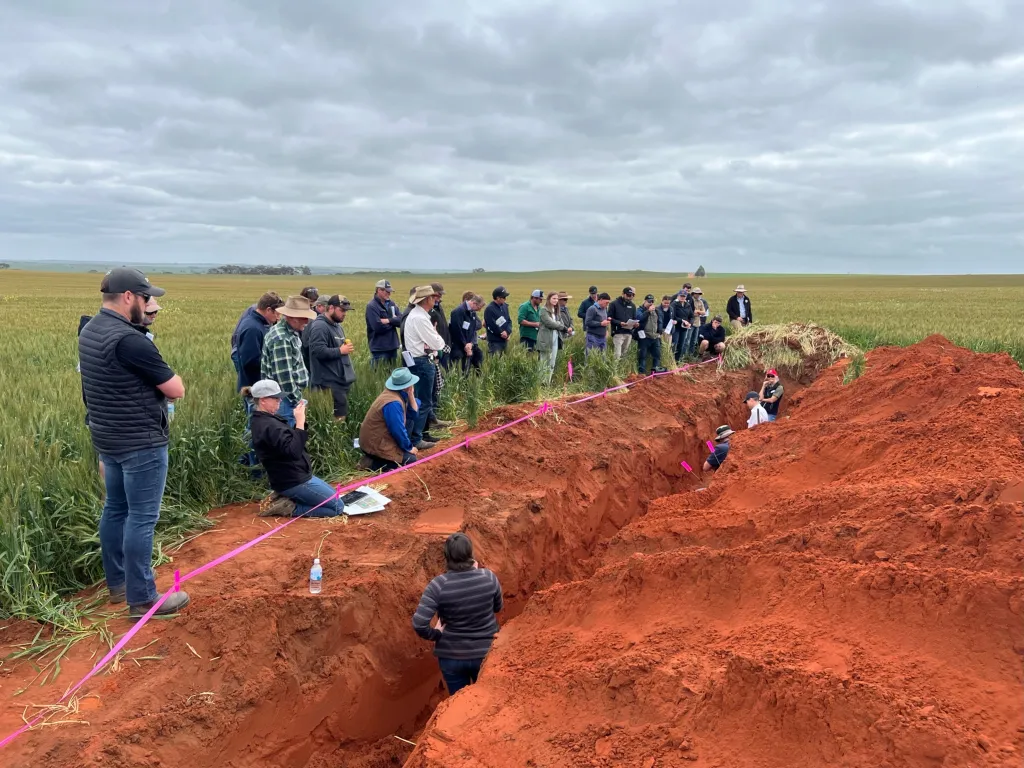Summit sees some good research results despite a tough season
By Summit Fertilizers, April 2024
Testing weather that challenged many growers in 2023 was likewise felt by the Summit Field Research Team. The northern wheatbelt remained dry. Areas further south received only decile 5 rainfall (or slightly higher) to August, and little-to-no rainfall after the second week of September.
This coincided with critical spring grain filling and pasture growth. As an extreme example, the rain gauge at our Bunjil sulphur trial site recorded just 52 mm of rain from April 1 to October 31.

pasture site (above) showed shoot tissue nitrogen concentration responses that are deserving of
further investigation this season.
Nevertheless, 36 nutrition trials were established and harvested, and offered a varying range of treatment responses. Bearing in mind the long standing variability in WA’s seasonal fortunes, it all helps us provide the most appropriate nutrient management advice for our clients.
The “P is key” phosphorus rate trial, established by Summit Narrogin based Area Manager, David Hull, alongside potassium and nitrogen product trials near Wickepin, added weight to our growing database of soil Colwell P and DGT-P tests, relative to crop response.
The site surface soil (0-10 cm) showed a very decent Colwell P of 35 mg/kg and a P buffering index of 49 – classified as “very low”, but increasing with depth.
David was keen to investigate the importance of P nutrition at crop establishment to lay a foundation for wheat production, especially significant considering the two previous high production years of 2021 and 2022.

responded strongly to establishment P up to
16 kg/ha from MAPCuZn. Soil 0-10 cm Colwell
P 35 mg/kg, PBI 49, DGT-P 30 µg/L.

strongly to establishment P up to 25 kg/ha
from MAPSZC. Soil 0-10 cm Colwell P
17 mg/kg, PBI 63, DGT-P 9 µg/L.
The Wickepin trial showed yield increases up to 700 kg/ha from establishment P up to 16 kg/ha (Figure 1), representing additional gross margin up to $195/ha.
It aligns with previous Summit and GRDC trial work on soils with PBI of 50 and above, and further reinforces that DGT-P soil testing is the most reliable indicator of cereal crop responsiveness to P fertilizer.
Not far away at Narrogin, in an almost identical barley trial, results were very similar. This time a 1.4 t/ha yield increase was gained from P applied up to 25 kg/ha (Figure 2). This barley trial highlighted potential to gain an additional $400/ha by optimising establishment P rates. The barley results reflected a soil that was substantially deficient in stored P. It is a clear example of the value of best practice soil analysis.
Elsewhere, nitrogen was a focal point, in particular with the increased interest in urea volatilisation.
Summit Field Research incorporated NBPT (N-(n-Butyl) thiophosphoric triamide) based urease inhibitor into a number of cropping and pasture trials and found results were consistent. Shown below (Figure 4) are results of three of the trials conducted.
We view last season as one of preliminary investigation.
The site conditions at these nitrogen trials were not conducive to either volatilisation or nitrification, and results generally showed no substantive increase in production from the use of inhibitors. Importantly though, no net negative impacts on profitability were seen.

including NBPT applied 4 September. Bars are daily rainfall (mm). Picture of the Harvey site top.
There were indicators of plant physiology responses that require more investigation, such as the increased shoot tissue nitrogen concentrations in pasture through a grazing rotation (Figure 3) and a hint of higher grain protein unrelated to yield (Figure 4).

urea+NBPT at three Summit field trial sites in 2023.
The addition of N-Shield NBPT and N-Shield Dual to Summit’s range is generating a lot of interest.
Research to clarify the optimum use scenarios for these inhibitor products will increase in 2024, to refine trends and allow for seasonal variation responses.















